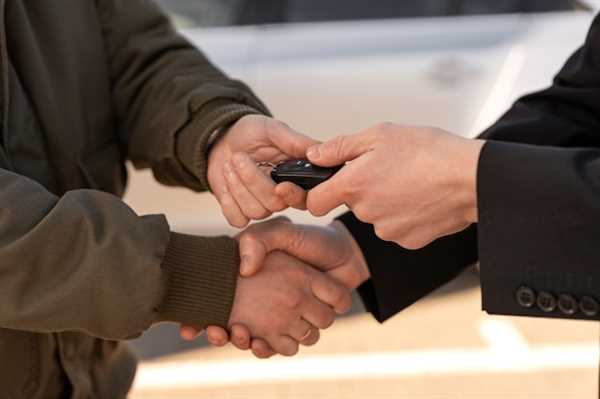
Before placing a bid, conduct thorough research on the vehicle’s history and condition. Utilize resources such as Carfax or AutoCheck to access important records that reveal any past accidents or repairs. This background information will guide your decision-making process and help you assess the true value of the automobile.
Set a clear budget that includes potential fees and taxes associated with the acquisition. It’s essential to establish a limit beforehand to prevent overspending during competitive bidding scenarios. By adhering to this budget, you can make informed choices while participating in auctions, ensuring you stay within financial boundaries.
Familiarize yourself with the auction process and how bidding works in your chosen setting. Understanding terms like reserve price, buyer’s premium, and bidding increments will enable you to navigate the environment more confidently. Attend preliminary events or online trials to observe and learn from experienced bidders, which can provide valuable insights into effective strategies.
Inspect the vehicle in person if possible, as photographs may not accurately represent its condition. Utilize this opportunity to assess the interior, exterior, and mechanical components while looking for signs of wear or damage. A hands-on evaluation is crucial when making a significant investment in a used automobile.
Employ the tips mentioned above to enhance your experience and increase the likelihood of making a suitable acquisition at your next vehicle bidding event. With preparation and a strategic mindset, you can confidently navigate the process and secure a deal that meets your expectations.
Understanding the Mechanics of Car Auctions

To navigate the process of acquiring a vehicle successfully, familiarize yourself with how bidding operates. Here are tips on understanding this dynamic environment:
- Research: Before participating, investigate the vehicles available. Look for history reports that detail previous ownership and any incidents.
- Set a Budget: Determine how much you’re willing to pay. Factor in additional fees such as buyer premiums, taxes, and possible transportation costs.
- Inspect the Vehicle: If allowed, examine the used vehicle thoroughly. Check for signs of wear and tear, and take notes on anything that might affect its value.
- Bidding Strategy: Decide on your maximum bid beforehand. It helps maintain discipline during the auction, preventing impulsive decisions.
- Understand The Terms: Familiarize yourself with the auction terms and conditions. Knowing what is expected can save you from misunderstandings later.
Learning these aspects can enhance your experience and success rate while acquiring a vehicle at auctions. Keep these guidelines in mind during the process and you will increase your chances of a satisfactory purchase.
Practical Tips for Evaluating Used Cars at Auctions

Inspect the vehicle’s exterior for dents, scratches, and rust. Check for paint inconsistencies, which may indicate prior repairs. A well-maintained exterior often signals overall care.
Examine the engine bay closely. Look for leaks, corrosion, and cracked hoses. A clean, well-maintained engine area suggests less wear and better upkeep.
Assess the interior for wear and tear. Pay attention to seats, dashboard, and steering wheel. Excessive damage might reflect neglect or harsh usage.
Test all electronics, including windows, locks, and infotainment systems. Ensure everything operates smoothly, as repair costs can add up.
Review the vehicle history report. Look for accidents, title issues, or odometer discrepancies. This document provides insight into the car’s past.
Start the engine and listen for unusual noises. Pay attention to the exhaust for smoke, which could indicate engine problems.
Check the tires for wear and alignment. Uneven tread can signal alignment issues or poor maintenance.
Take the car for a test drive. Pay attention to handling, brakes, and acceleration. This firsthand experience reveals potential issues.
Prepare a checklist to stay organized during your evaluation. Having a structured approach enables you to assess different aspects systematically.
Set a budget before attending and stick to it. Getting caught up in bidding can lead to overspending on a vehicle.
Engage with sellers to gather information about the car’s condition and maintenance history. Honest responses can help make informed decisions.
Steps to Successfully Bid and Purchase a Car at Auction
Research the vehicles available before the event. Know the market value of the used models you’re interested in to make informed decisions during bidding.
Inspect the cars thoroughly at the preview. Look for any noticeable damage or signs of wear that could affect performance and value.
Set a budget prior to bidding. Determine the maximum price you are willing to spend and stick to it to prevent overspending.
Familiarize yourself with the auction procedure, including bidding increments and payment methods, to be prepared when the time comes to bid.
Practice bidding with small amounts before the actual auction. This helps you get a feel for the atmosphere and bidding strategy.
Stay calm and collected during the event. Keep your emotions in check to avoid impulsive decisions that may lead to overbidding.
Watch your competition closely. Understanding their bidding patterns can give you an advantage and help you choose the right moment to place your bid.
Plan for additional costs beyond the winning bid, such as registration fees, taxes, and potential repairs, to evaluate the total expense accurately.
After winning, ensure all paperwork is in order before leaving the venue. Confirm the vehicle’s title transfer and any warranties involved.
Consider follow-up actions post-purchase. Schedule a check-up with a trusted mechanic to assess your new acquisition and ensure optimal performance.


